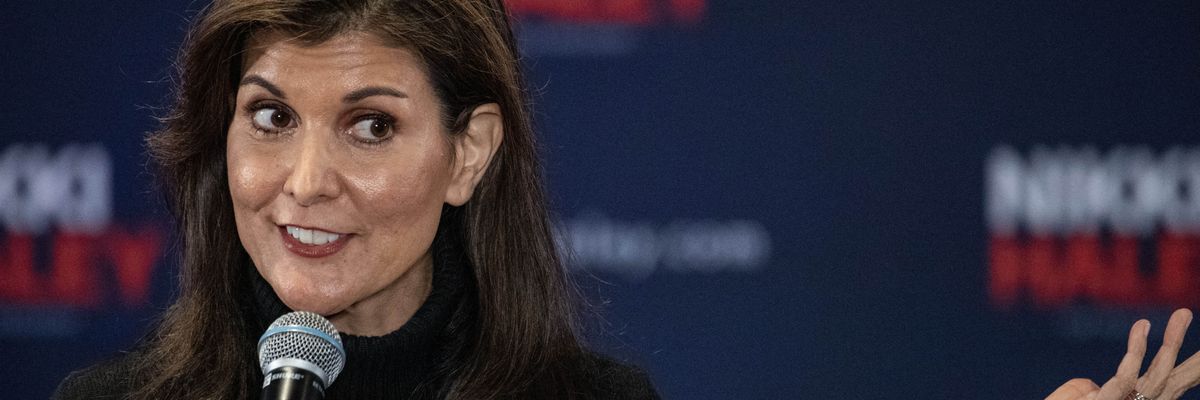Sarah K. Burris
December 31, 2023

Atlanta "Blacks for Trump" (Photo by John Stanton/Twitter)
St. Louis Post-Dispatch columnist Janet Y. Jackson is questioning how young people of color could consider joining Donald Trump's 2024 campaign.
Writing Sunday, the Black columnist explained that young voters never fully experienced the world that Trump wants to usher back into the United States. While some are out celebrating Jackson explained she's injured her foot and is stuck at home instead of dancing.
But as the new year begins she implores readers to renew their fight to protect American democracy and look deeper into why 74 million Americans were willing to support Trump in 2020. The group she wants to focus on is "Blacks for Trump," which she calls an "unfathomable... oxymoron."
"There are the one-issue voters for whom abortion or the economy is their main focus," writes Jackson. "There are those in the upper echelons who seek to preserve the revised tax codes that reduced their current taxes and future estate taxes. Some folks are so enamored of the riches Trump continually brags about that they ignore the financial devastation his multiple bankruptcies (i.e., Trump casinos and Trump University) caused for ordinary people."
She argues that many many voters want to eliminate the Civil Rights era and go back to a White America. There are even people who believe that Trump can somehow stop immigrants from coming into the U.S. "Although short of executing them en masse, I cannot imagine how."
When she first saw the sign she recalled thinking, "Have you lost your mind." But then realized there's a generation of Black voters who never experienced the Civil Rights Movement.
"Most younger Black Americans have never felt the racial animus today that we older people experienced, as recently as 50 years ago," Jackson explains. "These people may never have experienced being ignored at a store counter simply because a white person appeared at the counter subsequently, but I have.
"Nor could they believe the consequences of daring to object to this slight. Few could imagine being expected to step off a sidewalk simply to avoid coming face-to-face with a white person — I have. If these Black Trump supporters were always welcomed in any school or at any public pool, it’s the sacrifices we older people made that are responsible."
She explains that most of us want to believe that life is no different for a person of color than a White person, but all one must do is look at the dozens of unarmed Black people who were shot and killed by police.
"Black lives will not be better under a racist misogynistic bully," she explains. "which the former president clearly is, despite his protestations. In rally after rally, Trump is quoted saying something to the effect of They’re taking our country."
She closes by reminding folks that there were many who died for their rights to succeed, to live, to love and vote. Young folks would do good to remember that.








